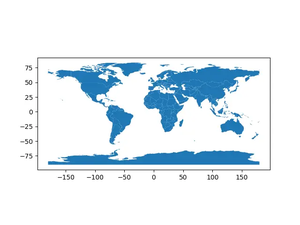Introduction
Handling time series data often requires analyzing changes between consecutive or periodic elements. In pandas, this task is made efficient and intuitive with the Series.diff() method. This tutorial covers the usage of Series.diff() from basic to advanced applications, complete with examples and outputs.
The Basic of pandas.Series.diff()
The Series.diff() function in pandas is designed to calculate the difference between consecutive elements in a Series object, where the first element is set as NaN since there’s no prior element to subtract from. By default, it calculates the difference between an element and its immediate predecessor. However, this behavior can be customized by specifying the periods parameter.
import pandas as pd
# Sample Series
data = pd.Series([1, 3, 7, 11, 15, 21])
# Default usage
default_diff = data.diff()
print(default_diff)Output:
0 NaN
1 2.0
2 4.0
3 4.0
4 4.0
5 6.0
dtype: float64Specifying Periods
The periods parameter in Series.diff() allows you to control the lag of the difference calculation. For example, to calculate the difference between every 2nd element:
# Calculating with periods parameter
data_periods = data.diff(periods=2)
print(data_periods)Output:
0 NaN
1 NaN
2 6.0
3 8.0
4 8.0
5 10.0
dtype: float64Handling Time Series Data
Time series data analysis often involves looking at how values change over time. Let’s use Series.diff() to analyze a simple time series dataset.
dates = pd.date_range('20230101', periods=6)
values = pd.Series([100, 110, 90, 105, 102, 108], index=dates)
time_series_diff = values.diff()
print(time_series_diff)Output:
2023-01-01 NaN
2023-01-02 10.0
2023-01-03 -20.0
2023-01-04 15.0
2023-01-05 -3.0
2023-01-06 6.0
Freq: D, dtype: float64Advanced Usage
Custom Indexes and Periodicity
When dealing with non-daily increments in time series data, Series.diff() becomes even more powerful. Consider weekly or monthly data, where you might want to analyze changes between the same day in consecutive months or weeks.
weekly_data = pd.Series([100, 105, 98, 107, 115], index=pd.date_range('20230101', periods=5, freq='W'))
weekly_diff = weekly_data.diff()
print(weekly_diff)Output:
2023-01-01 NaN
2023-01-08 5.0
2023-01-15 -7.0
2023-01-22 9.0
2023-01-29 8.0
Freq: W-SUN, dtype: float64Dynamic Period Analysis
For more in-depth analysis, you might want to calculate differences over dynamically defined periods, such as comparing quarterly performance year-over-year. This requires manipulating the periods parameter dynamically according to the dataset’s structure and desired analysis frame.
Visualizing Differences
An essential part of data analysis is visualization. You can visualize the differences calculated by Series.diff() using plotting libraries like Matplotlib or seaborn to better understand the trends and patterns in your data.
import matplotlib.pyplot as plt
values.diff().plot()
plt.title('Difference over Time')
plt.xlabel('Date')
plt.ylabel('Difference')
plt.show()Real-world Application
Consider a dataset consisting of daily sales figures for a retail store. By using Series.diff(), store managers can quickly identify sales growth or declines from day to day, enabling rapid strategic adjustments. Moreover, comparing differences over specified periods, like week-over-week or month-over-month, aids in recognizing longer-term trends and seasonal patterns.
Conclusion
The Series.diff() method in pandas provides an efficient and intuitive way to analyze changes in series data, from simple consecutive comparisons to complex periodic analyses. Mastering its usage can significantly enhance data analysis tasks, particularly in time series analytics.
